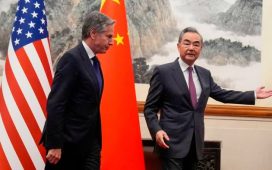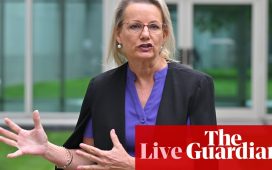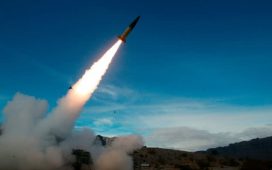Europe’s natural gas shortage is nearly certain to have more serious social and political impacts than the gasoline price increases that are proving uncomfortable for the Biden Administration.
The problem is one that goes beyond an immediate threat of energy poverty, or even the possibility of rolling blackouts in the event of prolonged cold spells.
Natural gas accounts for about 80 per cent of the variable costs of essential nitrogen fertiliser components such as ammonia. The ammonia price in Europe roughly tripled between January and March. Expensive fertiliser pressures food supplies.
Freezing in the dark while hungry does not make happy voters. At best, over the next year or two European farmers will have to absorb large increases in the price of fertiliser, perhaps skimping on applications of it. That leads to lower crop yields and so higher food prices.
If the prices for Europe’s natural gas imports remain high, part of its domestic fertiliser manufacturing industry could shut down for prolonged periods, or even close permanently. Already, in October, the choking gas market led to substantial temporary curtailments in European fertiliser production by companies including Yara, BASF, CF Industries and Fertiberia.
And no, that capacity could not simply be replaced by more intensive recycling of food waste, sewage, or raw manure. European recycling is already quite efficient.
It gets worse. The natural gas price increases and shortages affect the nitrogen-based components of farmer’s fertilisers. But there are now also significant price increases in other principal mineral fertilisers such as phosphate and potash, along with sulphur.
Europe imports most of those raw materials, along with an increasing proportion of its natural gas. Foreign producers, though, have been limiting exports this year to support their domestic agriculture. China, which is the world’s largest phosphate producer, suspended or severely limited exports of phosphate-rich fertilisers starting in late July. The cuts are expected to last until June of next year.
Russia has announced restrictions on nitrogen and phosphate fertiliser exports for six months effective from December 1. This in effect subsidises domestic farms, which both reduces the domestic prices of food and supports Russia’s grain exports.
Some of the Russian and Chinese phosphate exports will be filled by OCP, the Moroccan phosphate monopoly. Even before that added demand, OCP’s earnings before interest, tax, depreciation and amortisation surged by 48 per cent in the first half.
This is not the end of fertiliser trade restrictions that will affect Europe. Up to now, EU trade sanctions on the Lukashenko regime in Belarus have not included the higher grades of potash from the mines owned by Belaruskali, the state monopoly. On December 8, though, delayed US sanctions on Belarus kick in, which are intended to cut off nearly all its potash exports — about a fifth of the world supply.
Much Belarusian potash is exported through highly visible dedicated port facilities in Lithuania. This makes it hard for Belarus to avoid sanctions through this outlet. Belarus could export through rail links in Russia, but the country has its own significant potash producer, Uralkali.
One would guess that Uralkali and its friends will take care of their own interests first, which probably include avoiding the US sanctions regime. Along with any possible increase in Uralkali’s exports, some of the drop in Belaruskali’s market share could be made up by increased potash shipments from Nutrien, the Canadian fertiliser group which has huge potash resources in Saskatchewan.
Nutrien’s third-quarter report, issued in October, disclosed that its ebitda from potash sales was already up 131 per cent this year. Anticipating the sanctions on Belarus, Nutrien said it would “surge production to an annualised run-rate of 17m tonnes during the fourth quarter”. Not for free, of course: Nutrien’s prices for potash products sold outside North America have risen 105 per cent this year.
Of course fertiliser prices have surged in the past, only to decline again as producers increased capacity and farmers cut back on their fertiliser use. Spikes similar to what we are seeing now came in early 2008, peaking a few months before the global financial crisis.
The difference this time, particularly in Europe, is that climate policy means there is no finance available for natural gas production expansion. Farmers can skimp on potash and phosphate applications for a season or two, but yields will decline quickly without nitrogen fertilisers.
The conundrum of cutting carbon emissions while maintaining food production has not been solved.








